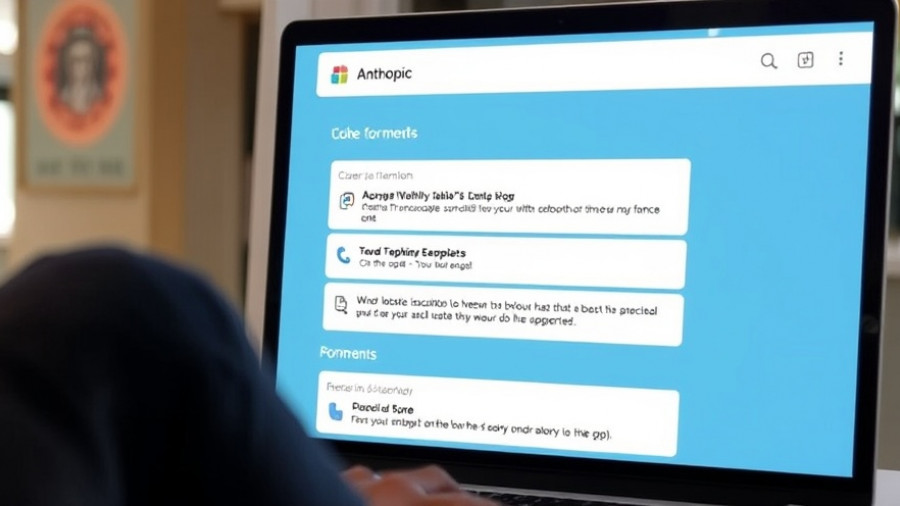
Claude's New GUI Feature: A Game Changer in AI Technology
Anthropic has recently ventured into the realm of real-time UI generation with their Claude AI, launching a feature known as Imagine. This innovative tool appears to bring together traditional user interface elements with the advanced capabilities of generative AI, creating an engaging experience for users to generate apps and digital artifacts in real-time.
How Does Imagine Work?
The Imagine feature introduces a vintage desktop environment, with its pop-up interface located conveniently at the corner of the Claude platform. It operates through a familiar layout, displaying common desktop elements like icons, windows, and a prompt field urging users on their creative journey. This blend of nostalgia and modern technology seems designed to ease newcomers into the world of generative AI.
As users engage with this feature, they interact with Claude in a way that asks, "What do you want to build?" This prompt is perhaps one of the most exciting aspects of the tool, as it invites creativity and experimentation. The classical desktop metaphor acts as a comfortable bridge for users who might be daunted by the complexities of AI.
Architectural Shift: Beyond a Simple Interface
But the implications of Imagine stretch beyond just visual design. It hints at a deeper architectural shift within Claude's framework:
- Dynamic Interaction: The tool functions actively by manipulating the Document Object Model (DOM) to craft a responsive UI from predefined building blocks.
- Generative Capabilities: This feature not only generates text or code but also allows users to develop unique interfaces on-the-fly.
- Agent Behavior: The AI acts as a lightweight agent, intuitively managing the user’s tasks as they create.
This sets a precedent for the future of user interfaces in AI applications, where the backend systems will need to effectively support real-time user demands.
Navigating User Experience with Claude’s Imagine
The incorporation of a window management system reflects careful thought behind user experience. Windows become containers for distinct features and applications, allowing individual content management. Users are granted the flexibility to resize and move these windows—empowering them to tailor their digital workspace according to their preferences.
What’s Next for Claude and Imagine?
Currently, Imagine is available as a demo and may only be accessible to select users or those on specific plans. With no set release date or clear guidance on the feature's future, many in the tech community are eager to see how Anthropic plans to evolve this engaging tool. It’s vital to keep an eye on subsequent updates regarding Imagine, as its development could serve as a template for other platforms embracing generative capabilities.
Potential Impacts on Industries and Individuals
The Imagine feature reveals not only the technological prowess of Anthropic but also offers insights into the evolving landscape of user interaction with AI. As organizations aim to adopt AI solutions, understanding how tools like Imagine can facilitate creativity and productivity will become increasingly vital. This feature could also empower individuals in roles such as graphic design, software development, and content creation, allowing for a new level of interactivity and personalization in their projects.
Final Thoughts: Embracing the Future of AI-Powered Interfaces
As we anticipate further advancements in AI technology, the work being done at Anthropic remains a significant talking point. Imagine is indicative of a broader shift toward democratizing AI, where users can create and tailor applications in innovative ways. As this technology matures, it is essential to explore how its implications will extend into different sectors, shaping the future of user engagement across the board.
 Add Row
Add Row  Add
Add 




Write A Comment